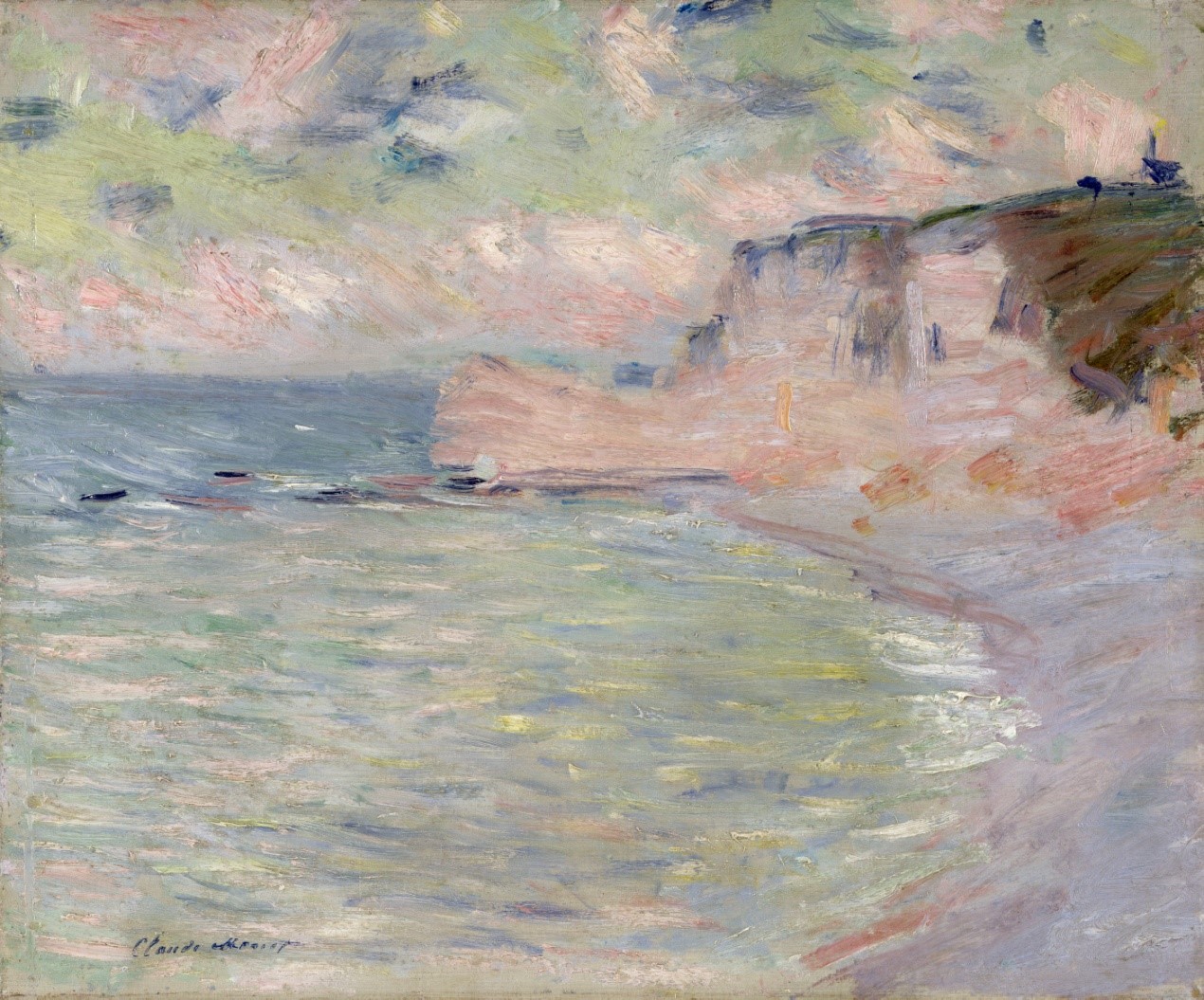
Falaise and Proted’Amont ,morning effect, 1885
Oil on canvas
50 x 61 cm
"Cliffs and the Porte d'Amont, Morning Effect" was created in 1885 and is one of the 37 works created in Etretat by Monet over a 3-4 month period in 1885 to 1886. Using "Pulville Beach, Sunset" in 1882 as a model, he focused all his attention on the water, air, the rocks and the mine, and released the painting from other descriptive connotations. The paint is quite thick and the brushstrokes are longer. If the sea looks quieter, the blowing wind seems to polish the front of the cliff, mixing the paint with the subject.
The coastal landscape of Etretat presented in this impressionist painting is one of the most beautiful on the coast of Normandy. Monet grew up in Le Havre, twenty-five kilometers away from Etretat. He had therefore been very familiar with the secenery of Etretat since he was a child. In the winter of 1868-1869, when Monet was only 28 years old, he painted this landscape for the first time (there is also a pastel painting on the same subject), which is "The Stormy Sea of Etretat". A group of figures are painted in the foreground of this work, and Cape Avar is in the background. Five years later, in 1873, Monet once again captured the Cape Amon from a closer angle, more focused on the ore of the mine. In 1883, 1884, and 1885, when he revisited this place many times, he was going through all kinds of trials in his life, both work and personal. Therefore, all the works he created in Etretat at that time can be regarded as the author's will to trace the origin. For the artist, this approach not only expresses the self-consciousness engraved in time, but also emphasizes the eternal changes in nature. Monet's stay in Etretat from the end of 1885 to the beginning of 1886 once again became an opportunity for him to create a series of new works before he settled permanently in Giverny.
